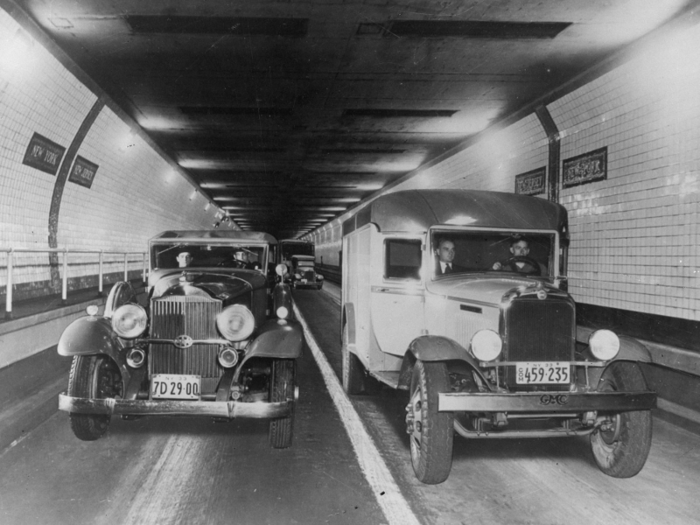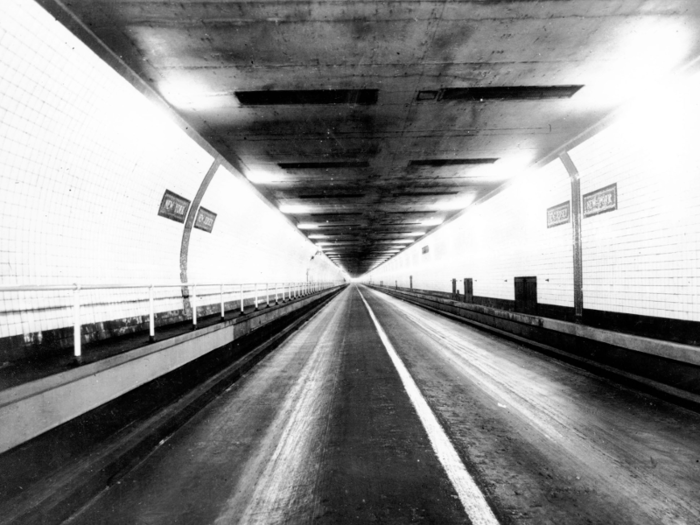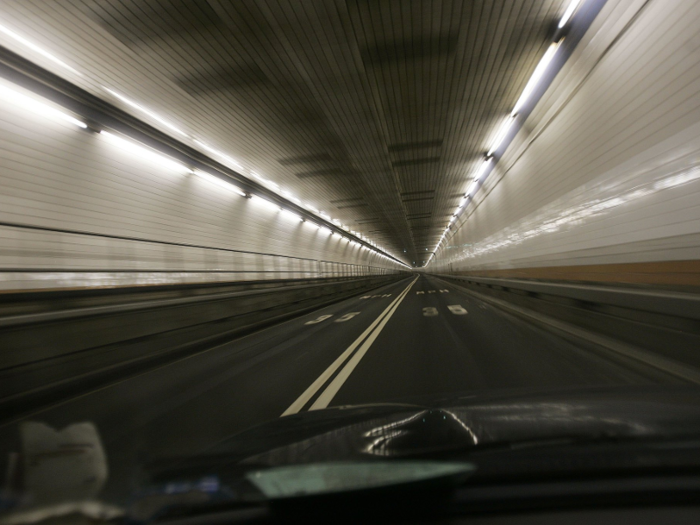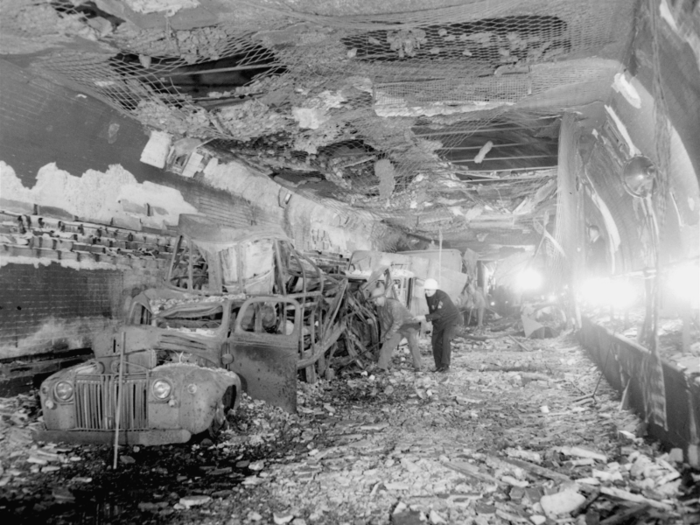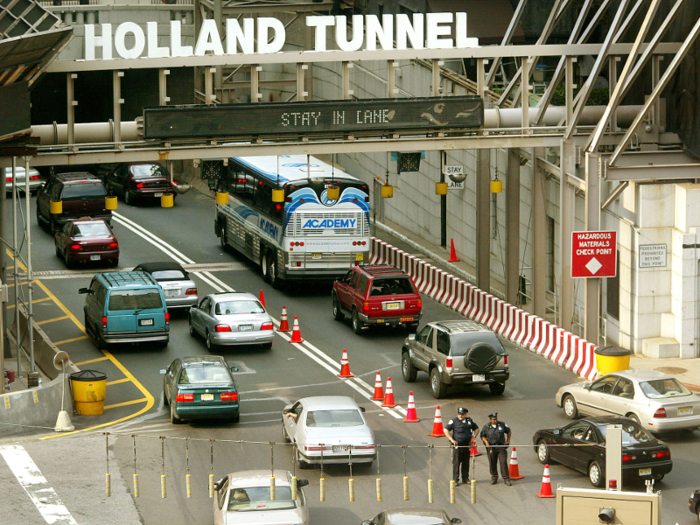The project's engineers had to find a way to deal with tailpipe emissions.
Clifford Milburn Holland was named the project's lead engineer in 1919, and his biggest challenge was to figure out a way to prevent exhaust fumes from getting trapped in the tunnel and becoming harmful to drivers. He settled on a ventilation system that would send clean air from ducts placed beneath the road and remove fumes through ducts located above vehicles that would lead to ventilation towers above the tunnel.
The system, which can replace all of the air in the tunnel in 90 seconds, became the template for future tunnels designed for automobiles.
The tunnel opened in 1927, after the deaths of its first two lead engineers.
In 1924, Holland suffered a nervous breakdown due to stress from the project and died from a heart attack. His successor, Milton Freeman, died from pneumonia less than a year later. The project's third lead engineer, Ole Singstad, carried out the rest of the tunnel's construction until it opened in 1927.
Originally called the Hudson River Vehicular Tunnel, it was renamed for Holland after his death.
At the time it opened, it was the world's longest underwater tunnel.
The Holland Tunnel is around 1.6 miles long and has a diameter of 29.5 feet. It was the world's longest, continuous underwater tunnel when it opened, but it's since been surpassed. Now, it's not even the longest underwater tunnel in New York, a distinction that belongs to the 1.7-mile Brooklyn-Battery Tunnel.
The tunnel survived a massive fire in 1949.
In 1949, a tractor-trailer carrying over 4,000 gallons of carbon disulfide set off a series of explosions when one of the drums carrying the liquid fell from the vehicle and caught fire. The incident injured 66 people and caused extensive damage to the tunnel's ceilings and walls.
But the Holland Tunnel survived and would later be recognized for its historical and scientific importance. In 1984, the American Society of Civil and Mechanical Engineers named it a National Historic Civil and Mechanical Engineering Landmark, and in 1993, the US Department of the Interior designated it as a National Historic Landmark.
The tunnel is set to undergo a five-year repair project.
Hurricane Sandy filled the tunnel with 30 million gallons of water in 2012, leading the Port Authority to announce a five-year $364 million repair project in February. The project is expected to begin in the second quarter of 2019 and address damage to the tunnel's structure and internal systems.

